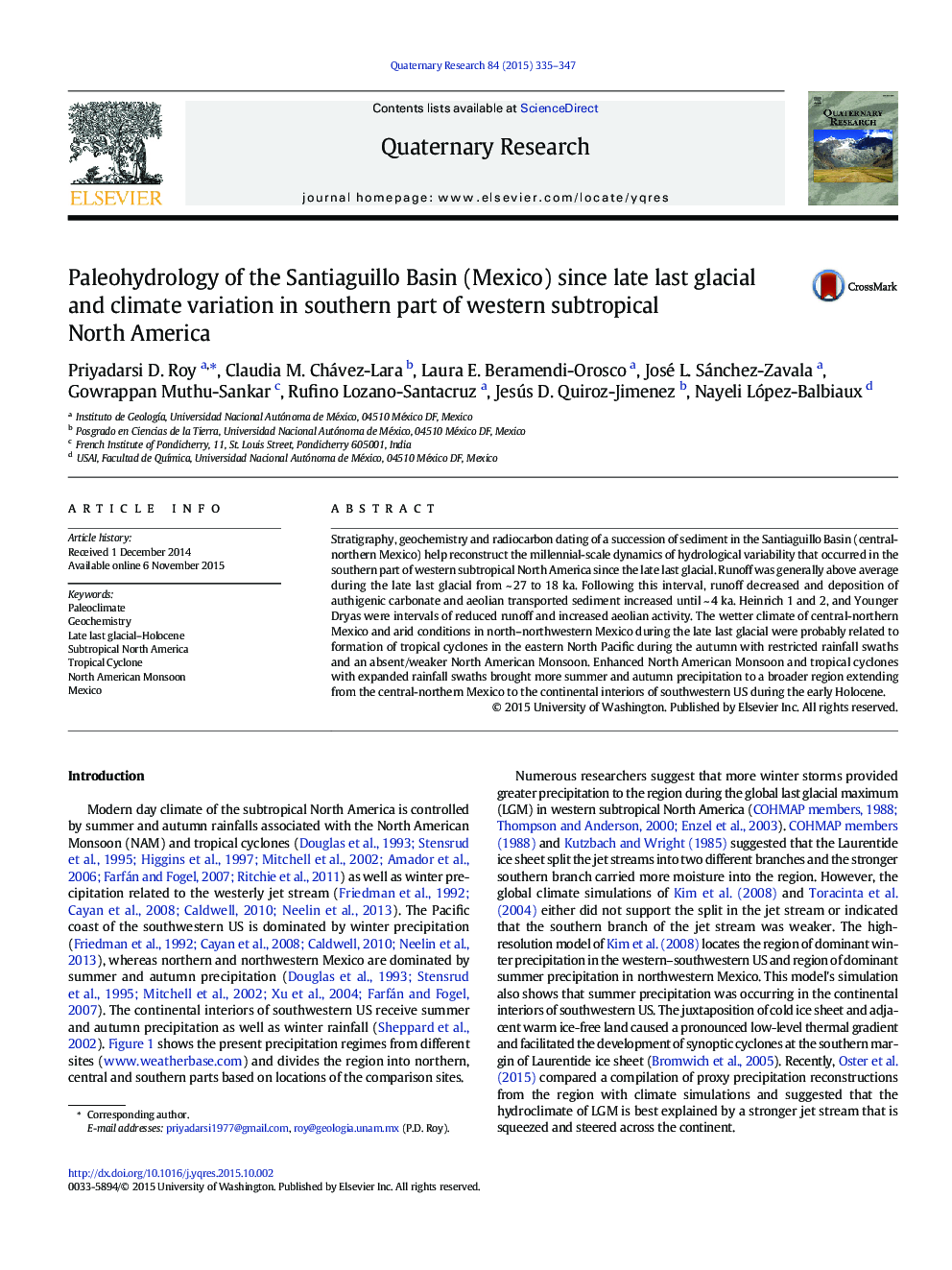| Article ID | Journal | Published Year | Pages | File Type |
|---|---|---|---|---|
| 1045041 | Quaternary Research | 2015 | 13 Pages |
Abstract
Stratigraphy, geochemistry and radiocarbon dating of a succession of sediment in the Santiaguillo Basin (central-northern Mexico) help reconstruct the millennial-scale dynamics of hydrological variability that occurred in the southern part of western subtropical North America since the late last glacial. Runoff was generally above average during the late last glacial from ~Â 27 to 18Â ka. Following this interval, runoff decreased and deposition of authigenic carbonate and aeolian transported sediment increased until ~Â 4Â ka. Heinrich 1 and 2, and Younger Dryas were intervals of reduced runoff and increased aeolian activity. The wetter climate of central-northern Mexico and arid conditions in north-northwestern Mexico during the late last glacial were probably related to formation of tropical cyclones in the eastern North Pacific during the autumn with restricted rainfall swaths and an absent/weaker North American Monsoon. Enhanced North American Monsoon and tropical cyclones with expanded rainfall swaths brought more summer and autumn precipitation to a broader region extending from the central-northern Mexico to the continental interiors of southwestern US during the early Holocene.
Related Topics
Physical Sciences and Engineering
Earth and Planetary Sciences
Geology
Authors
Priyadarsi D. Roy, Claudia M. Chávez-Lara, Laura E. Beramendi-Orosco, José L. Sánchez-Zavala, Gowrappan Muthu-Sankar, Rufino Lozano-Santacruz, Jesús D. Quiroz-Jimenez, Nayeli López-Balbiaux,
